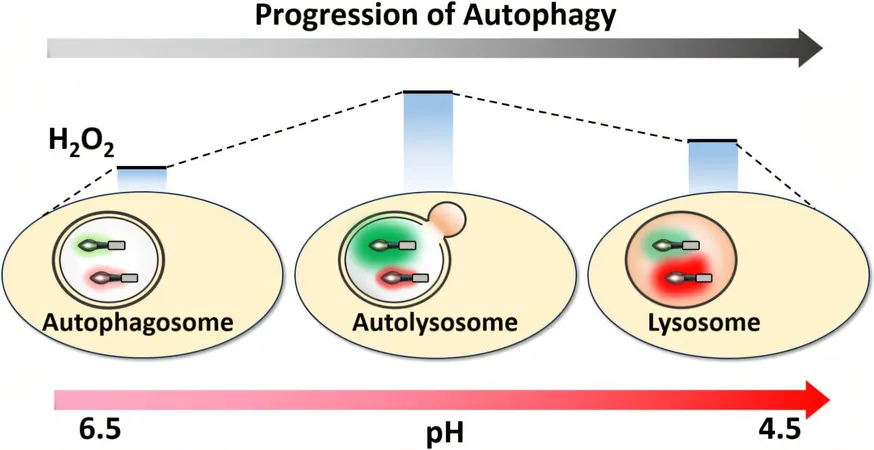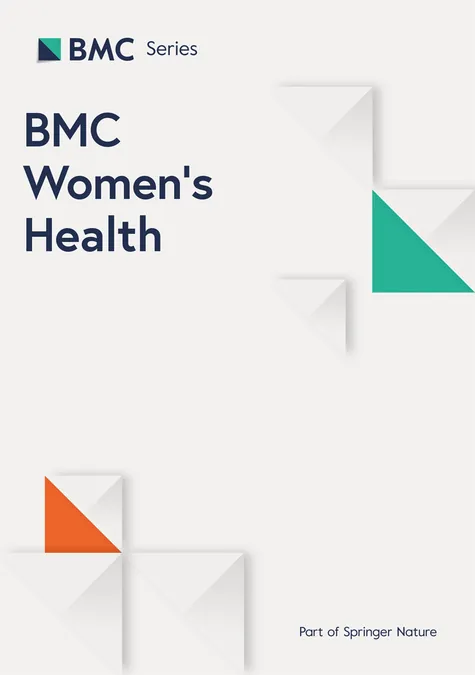
Groundbreaking Discovery Unveils Secrets of Cellular Recycling: The Hidden Mechanism Behind Health and Disease
2025-01-21
Author: Daniel
Introduction
A groundbreaking study from the Tata Institute of Fundamental Research in Mumbai, India, has unveiled astonishing new insights into the vital cleanup process our cells perform daily. This process, known as autophagy, functions as an internal recycling system, ensuring our cells remain healthy by eliminating damaged components and reclaiming useful materials.
The Process of Autophagy
Autophagy initiates the formation of a specialized vesicle termed the autophagosome, which traps the cellular debris. This autophagosome then merges with a lysosomal vesicle to form an autolysosome. Eventually, the autolysosome matures into a fully functional lysosome, where cellular waste is meticulously broken down by enzymes, releasing essential components back into the cell's cytoplasm.
Importance of Autophagy
This cleaning operation is not merely an organizational task; it is crucial for cellular survival. Under stress conditions—such as nutrient deficiency or low oxygen levels—autophagy allows the cell to dispose of older, less efficient components to provide necessary building blocks for survival. Consequently, understanding the intricacies of this process is vital as it plays a significant role in maintaining health.
Dysfunction and Disease
Dysfunction in autophagy has been linked to a variety of serious health issues, including major cardiovascular diseases, neurodegenerative disorders like Alzheimer’s and Parkinson’s, as well as metabolic diseases such as diabetes and cancer. A range of proteins and small molecules regulate this critical process, and any misregulation can result in impaired autophagic function. Thus, unlocking the details of what occurs inside the cellular recycling centers at each stage of autophagy is essential for better comprehension of its impacts on health.
Recent Research Advancements
Researchers made a significant advancement in this area, with results published in the journal JACS Au. They examined two key indicators: pH levels and hydrogen peroxide (H2O2) concentrations within autophagic vesicles. Variations in pH, which shift from approximately 6-6.5 in early stages (autophagosomes) to around 4.5 in later stages (lysosomes), serve as a reliable signal for identifying the stage of the recycling process. By simultaneously tracking H2O2 levels, scientists aimed to understand how oxidative stress influences autophagy.
Role of Hydrogen Peroxide
H2O2 acts as a critical regulator of autophagy. In healthy circumstances, low H2O2 levels stimulate autophagy, enabling cells to better adapt to stress. Conversely, elevated levels during oxidative stress can impede autophagy, compromising cell survival. Understanding the behavior of H2O2 throughout various stages of autophagy is crucial for elucidating its role in disease contexts.
Innovative Monitoring Techniques
Using innovative fluorescent sensors specifically designed for autophagic vesicles, the researchers were able to monitor both pH and H2O2 concentrations during the recycling stages. To their surprise, they discovered that autolysosomes—previously overlooked in terms of their H2O2 content—exhibited the highest levels of hydrogen peroxide. This finding challenges existing perceptions, as it was anticipated that H2O2 levels would peak at the later stage of lysosomes.
Implications of the Findings
The significance of this revelation cannot be overstated: it indicates that autolysosomes play a critical role in regulating autophagy, potentially providing pivotal insights into therapeutic strategies for diseases linked to faulty autophagic processes. By mapping the fluctuations of H2O2 in autophagy, researchers can deepen their understanding of how oxidative stress impacts cellular health, potentially paving the way for innovative treatments for conditions associated with autophagic impairment.
Conclusion
In essence, this enlightening research not only shines a light on the fundamental workings of our cellular machinery but also opens new doors for tackling some of the most pressing health challenges of our time. Stay tuned as scientists continue to explore these cellular secrets that could redefine our approach to treating disease!



 Brasil (PT)
Brasil (PT)
 Canada (EN)
Canada (EN)
 Chile (ES)
Chile (ES)
 Česko (CS)
Česko (CS)
 대한민국 (KO)
대한민국 (KO)
 España (ES)
España (ES)
 France (FR)
France (FR)
 Hong Kong (EN)
Hong Kong (EN)
 Italia (IT)
Italia (IT)
 日本 (JA)
日本 (JA)
 Magyarország (HU)
Magyarország (HU)
 Norge (NO)
Norge (NO)
 Polska (PL)
Polska (PL)
 Schweiz (DE)
Schweiz (DE)
 Singapore (EN)
Singapore (EN)
 Sverige (SV)
Sverige (SV)
 Suomi (FI)
Suomi (FI)
 Türkiye (TR)
Türkiye (TR)
 الإمارات العربية المتحدة (AR)
الإمارات العربية المتحدة (AR)